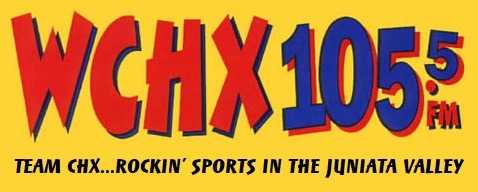By: Greg Maresca
It was quite the off season for Penn State athletics. In July, Penn State in conjunction with the Nittany Lion Club announced a record-breaking fundraising year of $164.9 million. “The support from nearly 20,000 donors this year marks a significant milestone for Penn State Athletics,” said Pat Kraft, Penn State Vice President for Intercollegiate Athletics. “Raising nearly $165 million, the most in our history, demonstrates the strong belief in our mission and the direction of our programs.”

The Beaver Stadium $700 million revitalization project encouraged four of the top five gifts in Penn State Athletics history. According to The Philadelphia Inquirer, a new football stadium would have cost around $1.5 billion. There is no palatial palace on campus but one is being reconstructed to resemble one.

The specter of Joe Paterno, once an emotional undercurrent in every fundraising conversation, has been assuaged. What was once a sensitive obstacle is now a distant echo. Time, in its quiet way, has proven its power to overcome most anything. Paterno is gone and so is his statue and whatever stigma over donations seemingly forgotten.

With the stadium’s press box now history, 7,900 temporary seats on the stadium’s west side have been installed to accommodate displaced seating that includes a press box, restrooms and concessions. Penn State will maintain a capacity of over 100,000 during construction that will last two seasons.
Beaver Stadium’s last renovation project was in 2001, which added 12,000 seats.
Since then, the college sports’ business model has flipped multiple times and is still unresolved.

The finished stadium will see the 106,572-seat facility — the second largest in college football and the fourth largest in the world — receive a wide range of enhancements, including wider concourses, additional restrooms, new escalators, an upgraded videoboard and lights, to include upgraded Wi-Fi and cellular connectivity. Moreover, additional premium seating options are being incorporated as part of the overhaul, with the full scope of construction slated for completion by August 2027.

For a striking contrast in time and cost, the Empire State Building was completed in just one year and 45 days — ahead of schedule and under budget by an incredible 27 percent – back in 1931.
Winterization will transform the stadium from a seasonal venue into a year-round asset. The upgrades will make the facility operable during subfreezing temperatures, opening the door to events beyond football — from concerts and community gatherings to potential postseason showcases.
Modernizing Beaver Stadium to support year-round functionality and significantly enhance the game day experience represents a more impactful advancement than any single event, such as a ‘White Out,’ while ensuring the preservation of its historic legacy.
Also in the works is a new welcome center and 21,000-square-foot indoor facility at Beaver Stadium that will further cement the venue as the “front door” for Penn State.
University officials say the renovations will not only enhance fan experience but also serve as a springboard for regional economic growth. In essence, the stadium’s evolution reflects a broader strategy: turning tradition into opportunity, and game day into a year-round engine for development.
For generations, Penn State fans have treated fall Saturdays as sacred rituals — tailgates and touchdowns woven into the fabric of Happy Valley. Penn State prided itself on offering one of the most affordable major-conference football experiences. But as athletic departments nationwide grapple with rising costs, NIL demands, and facility upgrades, the price of those traditions will come with a steeper cost.
Penn State Athletics will charge a slate of mandatory fees affecting nearly every purchase. Season and single-game tickets, football parking passes, concessions, and merchandise will have additional charges. The most notable is a $20 per-seat “contribution” added to every football season ticket, while parking will increase to $45.
Unlike many major collegiate programs, Penn State’s athletic department operates without financial support from student fees or broader university subsidies — a distinction that underscores its fiscal autonomy.
Penn State Athletics is one of a handful of self-sustaining intercollegiate athletics departments nationwide. The entire project will be paid for through fundraising, concessions, naming opportunities, sponsorships and ticket sales, including new premium seating options to be added during the renovation.
Blue and White seeing red
However, and it’s a vast however, Penn State has the highest debt-to-income ratio of any university including California’s bankrupt athletics. Last year, the athletic department reported $202.2 million in revenue against $202.1 million in expenses – a razor-thin surplus.
Penn State Athletics currently has $250 million of debt paid by athletics’ revenue. The university backs the debt, guaranteed by tuition income. If the athletic department does not generate sufficient capital to pay the debt, students and the taxpayer will surely pay.
The university projects a $44 million surplus for the athletic department over a 30-year period following the renovation. However, the basis for this estimate remains opaque, raising questions about the assumptions and methodology used to arrive at such a figure.
Financing will come through a blend of revenue sources. The borrowing advocates believe that a better stadium with luxury suites and premium seating will attract wealthier alumni and, in turn, more substantial donations. Debt payments are expected to be covered by annually increased income from concessions, merchandise, seating, and luxury suites. Additionally, the university anticipates raising approximately $134 million through philanthropic contributions, naming rights, and corporate sponsorships — a strategy that blends tradition with market savvy.
Penn State Athletics has for decades been an economic powerhouse for the Centre County Region and revenue from its football program is the main source of support for its 31 NCAA sports. According to a 2022 study commissioned by Happy Valley Adventure Bureau, the annual economic impact for football is estimated at $87 million.
Despite Penn State announcing the closure of seven branch campuses by the end of the 2026–27 due to declining enrollment one wonders how long before it affects the sports’ programs.
When the season kicks off against Nevada on Saturday afternoon Aug. 30, so will a new name to this 65-year-old venue. Recognizing the generosity of the Werzyn family and West Shore Home, the field’s rented name will be the West Shore Home Field at Beaver Stadium – until 2039.
Even the roots of generosity, like the towering oak of Paterno’s legacy, eventually wither in the soil of Beaver Stadium.


